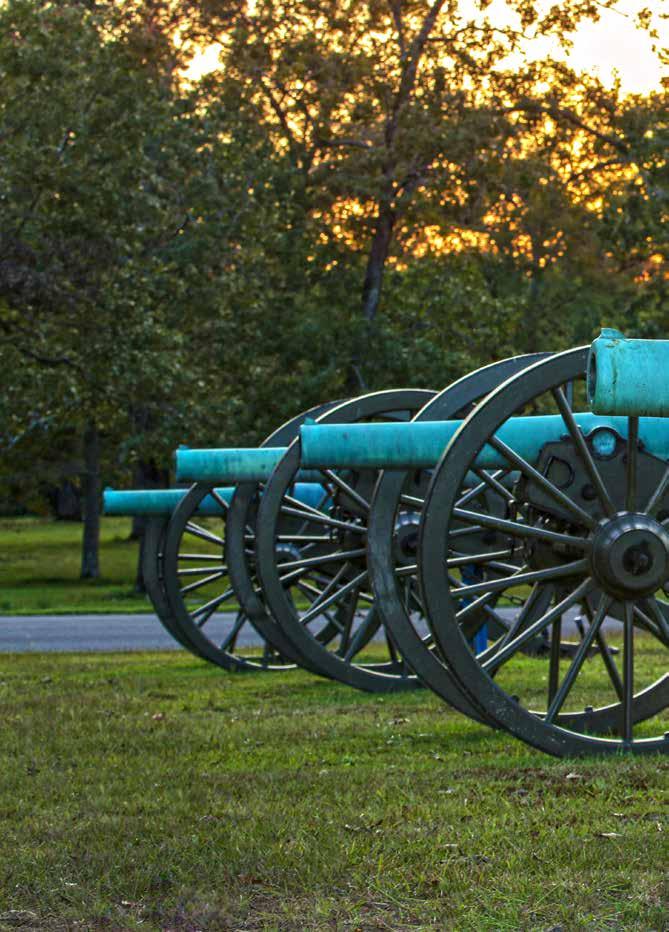
3 minute read
Good Getaways
Story and photos by David Moore
Shiloh. It means “place of peace” in Hebrew. Yet it was anything but on April 6-7, 1862, as Union and Confederate armies clashed at Shiloh, Tenn., killing or wounding 23,746 soldiers – America’s bloodiest battle to that point in history.
Advertisement
Considered today as one of the nation’s best preserved Civil War battlefields, the 5,000-acre Shiloh National Military Park is a surprisingly peaceful and lovely place to visit. It’s as quiet as … well, the U.S. National Cemetery there. Strolling through a tranquil field or along a dirt lane flanked by split-rail fencing, peering through dense, rolling forests or resting against a blue-patinaed bronze cannon barrel – it’s still easy to imagine the carnage that unfolded here to a cacophony of blasting Springfields, booming artillery, Rebel yells and screams of agony.
Engaging as it is somber, Shiloh is an interesting – and easy – place to visit. Visitors are encouraged to begin their discovery of the battlegrounds 22 miles south in Corinth, Miss. If you take Ala. 157 from Cullman or Alt U.S. 72 from Decatur, it’s right on your way.
At Corinth, two crucial railways crossed, forming the transportation “spine” of the Confederacy’s western theater. It was here that Confederate troops regrouped after Union victories – under Gen. Ulysses S. Grant – at forts Henry and Donelson in that February.
Grant pursued the Rebels up the Tennessee River amassing his troops for weeks at Pittsburg Landing. They were intent on marching on Corinth when approaching reinforcements arrived. They didn’t get the chance. In the pre-dawn hours of April 6, Gen. Albert Sidney Johnston – who was killed in the horrible carnage of that day – preempted Grant’s plans, attacking
Good Getaways Civil War horrors permeate the stillness lying over Shiloh battlefield
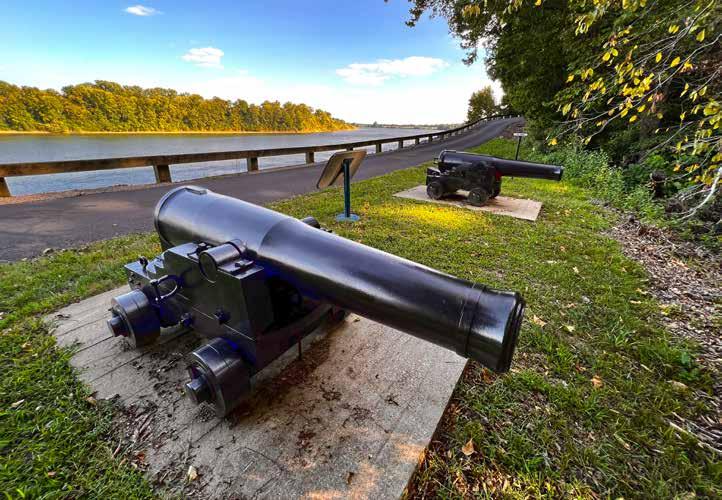

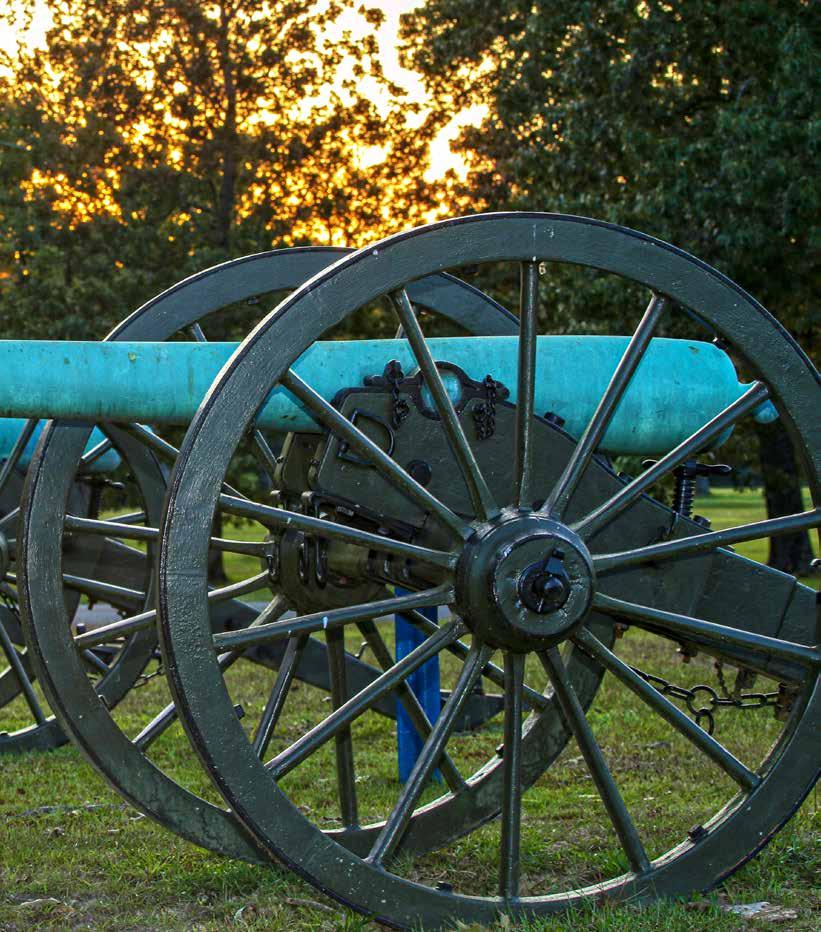
Shiloh National Military Park is home to 220 Civil War cannons, among them these rifled, 3.8in. James pieces. Their brass barrels today have a blue patina. Throughout the sprawling park, cannon batteries, monuments and conflict sites have signage, identifying the regiments and often details on the action there. The two cannons at bottom left are set up at Pittsburg Landing on the Tennessee River; they’re replicas of the guns used on Union gunboats that docked there in the lead-up to the battle of Shiloh. During the rainy night of April 6-7 they fired every 15 minutes at Confederate encampments. One myth about Shiloh concerns the Sunken Road, center – it is not sunken. A section of it dubbed “The Hornet’s Nest,” saw intense fighting the first day. Below, a diorama in the visitor center depicts that action. Entrance to the battlefield and visitor center is free. The park – crisscrossed by 13.1 miles of paved lanes – is open from sunup to sundown.
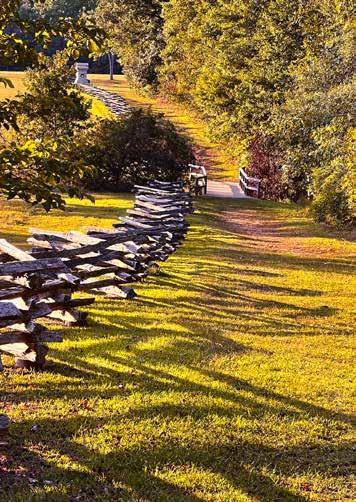
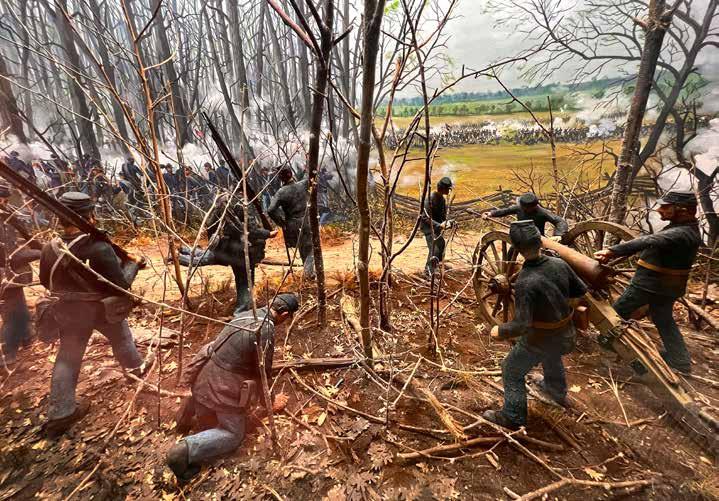

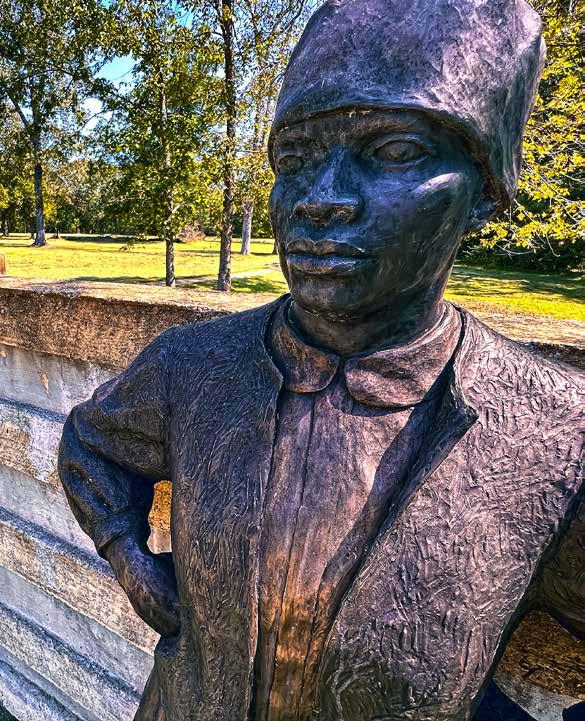

Clockwise: David Russell, who distributes Good Life Magazines in Cullman and Marshall counties, lends perspective to one of Shiloh’s many monuments; interesting statues are found at Corinth’s “contraband camp,” where hundreds of ex-slaves got their first taste of freedom; trains still use the Corinth crossroads; Springfield rifles are displayed at the Corinth interpretive center.

outnumbered Union troops at the Shiloh church. Though pushed back, the North retained the river landing and positions up the hill.
Union reinforcements finally arrived overnight and now, outnumbering the Confederates, Union troops counterattacked in the morning. After six bloody hours they forced the Rebels back to Corinth. After a Union siege of Corinth and fierce fighting, two months later the remaining Confederate forces there were forced to flee.
Shiloh battlefield is a part of the National Park Service. Visiting it today, one might ponder if, buried beneath time and soil, there lingers yet minute molecules of the sea of blood shed here by a nation torn asunder during a war with itself. Shiloh not only honors the dead, but it stands as a monument to the lessons of history, lest anyone be thoughtlessly, insanely tempted again.










